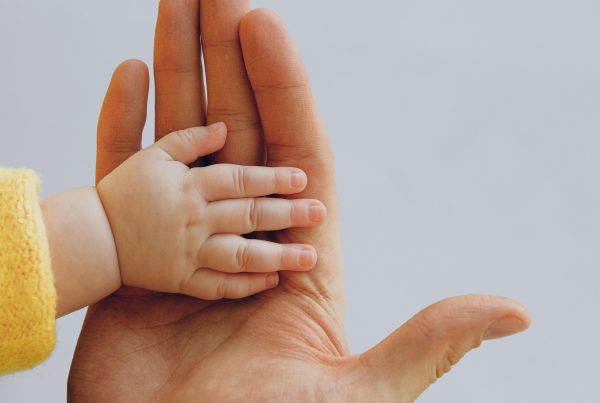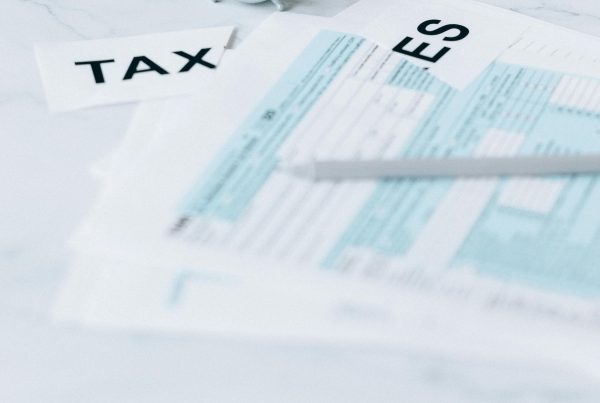JobKeeper Reference Date
Now 1 July 2020
The Coronavirus Economic Response Package (Payments and Benefits) Amendment Rules (No 7) 2020, registered on 14 August 2020, changed the JobKeeper employment reference date to 1 July 2020 (from 1 March 2020) for determining employee eligibility, with effect from 3 August 2020. The amending rules commenced on 15 August 2020 and apply to JobKeeper fortnights that began on or after 3 August 2020; that is, they are retrospective.
General observations
The changes do not affect any entitlements payable under the existing JobKeeper rules, ie for JobKeeper fortnights ending on or before 2 August 2020.
Although the reference date is now 1 July 2020, there is scope for certain employees who have been or will be re-engaged by the same employer after that date to nevertheless qualify for JobKeeper (see under the heading “re-employed employees”). This does open the door for certain employees to be re-engaged and their employer to receive JobKeeper for the wages it pays.
Eligible employers that have employees who become eligible under the revised rules had to notify the newly eligible employees by 22 August 2020. The employer then had until 31 August to satisfy the requisite wage condition.
The other changes that have previously been announced will be dealt with in separate amendments, namely:
- the extension of JobKeeper payments to 28 March 2021 (the end date otherwise being 27 September 2020);
- changes to the turnover test (ie from projected turnover (ie prospective) to actual turnover (retrospective)); and
- the two-tiered payment system.
The extension and changes to the rules bring the estimate of JobKeeper payments overall to $101.3 billion.
Overall purpose
For JobKeeper fortnights beginning on or after 3 August 2020, the reference date for determining certain employee eligibility conditions is changed from 1 March 2020 to 1 July 2020. The Explanatory Statement says that the purpose of this change is to extend the scope of JobKeeper so that “it also benefits employers of more recently engaged employees”.
Importantly, the amending rules preserve the existing eligibility of employees for JobKeeper payments; that is, those for whom employers are currently receiving JobKeeper. Under the amendments, these are termed “1 March 2020 employees”, meaning those employees who satisfied the rules as at that date.
As a result, for JobKeeper fortnights beginning on or after 3 August 2020, an individual can be an eligible employee if they:
- meet the eligibility requirements with reference to the new 1 July 2020 date; or
- qualify as a 1 March 2020 employee.
Newly eligible employees
The later reference date provides the opportunity for qualifying employers to access JobKeeper for those employees who they engaged after 1 March 2020 and who were in an employment relationship as at 1 July 2020. That is, for new employees engaged after 1 March.
The changes also allow employers to qualify for JobKeeper payments for those employees who do not qualify as 1 March 2020 employees, but became eligible by meeting the conditions under the new 1 July 2020 reference date. These include employees who:
- were not considered eligible 1 March 2020 employees because they did not meet the definition of a long-term casual employee as at 1 March 2020, but have since so qualified (ie as at 1 July 2020);
- were not considered eligible 1 March 2020 employees because they were not aged 16 years, but have since become aged 16 years and over by 1 July 2020 (ie they have had a birthday!);
- are aged 16 or 17 years and were living independently or not undertaking full-time study on 1 July 2020; and
- were residents or holders of a Subclass 444 (Special Category) visa on 1 July 2020.
Currently qualifying employees (1 March 2020 employees)
The amending rules make no changes to the existing eligibility of employees who are already covered by JobKeeper; that is, those for whom the employer has been receiving the benefit based on their status as at 1 March 2020. In other words, eligible 1 March 2020 employees do not need to retest (and potentially lose) their eligibility for their employer due to the introduction of the 1 July 2020 date, or satisfy any new nomination requirements.
Despite the status of 1 March 2020 employees being preserved, such employees must continue to meet the ongoing requirements under the rules – including, somewhat obviously, that they are actually employed by the employer, but also that they are not excluded from being an eligible employee (eg because they are in receipt of parental leave pay or dad and partner pay, or entitled to a workers’ compensation payment).
Although employees do not qualify as 1 March 2020 employees if their employment has ceased since 1 March, they may qualify for JobKeeper if they are engaged by another employer as at 1 July 2020. Further, if 1 March 2020 employees are made redundant by an employer and are later re-employed by the same employer (including after 1 July 2020), there is scope for them to qualify without further testing (as follows).
Employees who have changed employers since 1 March
The new rules allow individuals who had nominated as an eligible employee with one employer as at 1 March 2020 to re-nominate as an eligible employee of another employer as at 1 July 2020. An individual who re-nominates as an eligible employee of a new employer is excluded from being an eligible employee of the old employer (this is to avoid “double dipping”). A key condition is that the individual must have ceased their employment with the first employer before 1 July 2020 and commenced their employment with the new employer by 1 July 2020.
The reason for the cessation of employment is not relevant – the employee could have had their employment terminated, they could have resigned, or the employer may have ceased to exist.
Put simply, being employed by 1 July 2020 is the key determinant (ie satisfying the requirements as at that date). The status of the employee as at 1 March 2020 is not relevant to that employee or the new employer for these purposes.
Re-employed employees (by the same employer)
Eligible 1 March 2020 employees who are re-employed by their former employer may qualify for JobKeeper without the need to retest their eligibility under the 1 July 2020 reference date (since their eligibility under the former 1 March 2020 requirements and nomination requirements continues to be preserved).
This is intended to provide support to employers that have re-employed their former employees who had been let go because of the impacts of COVID-19.
Under the rules, where there is a break in the employment relationship between the employer and an individual who was an eligible employee for any JobKeeper fortnight ending on or before 2 August 2020, the eligibility of that individual is generally preserved for JobKeeper fortnights beginning on or after 3 August 2020. Once an individual is no longer employed by their former employer, the former employer is no longer entitled to receive the JobKeeper payment in relation to the individual (because the payment only applies to employees). The eligibility of an individual re-employed by the same employer is not preserved if the individual re-nominated for another employer.
It is worth reproducing the example in the Explanatory Statement to illustrate the intended operation of these changes.
Example
HYLT Pty Ltd qualified for JobKeeper payments for four eligible employees for the JobKeeper fortnight beginning 30 March 2020 and later fortnights.
After the end of the third JobKeeper fortnight, one of the eligible employees, Rosie, left HYLT Pty Ltd due to the lack of business for HYLT Pty Ltd and to pursue another opportunity. During this later time, HYLT Pty Ltd qualified for JobKeeper payments for only three eligible employees.
On 28 July 2020, Rosie returned to HYLT Pty Ltd and resumed ongoing full time employment. Further, Rosie was not eligible to renominate as an eligible employee of another qualifying entity.
For JobKeeper fortnights beginning on or after 3 August 2020, despite Rosie not meeting the 1 July 2020 requirements, HYLT Pty Ltd can qualify for the JobKeeper payment in respect of Rosie as a 1 March 2020 employee under the Rules. This is because Rosie’s eligibility based on the 1 March 2020 requirements was preserved since she was an eligible employee of HYLT Pty Ltd for a JobKeeper fortnight ending on or before 2 August 2020 and she did not qualify as an eligible individual of another qualifying entity.
Notification requirements for employees re-employed after 1 July 2020
Eligible 1 March 2020 employees who are re-employed by their former employer after 1 July 2020 must provide a notice to the re-employing employer if all of the following circumstances apply:
- the individual was an eligible employee of the qualifying employer as a 1 March 2020 employee of the employer;
- the individual had ceased to be employed by the qualifying employer after 1 March 2020 but before 1 July 2020; and
- the individual was re-employed by the qualifying employer after 1 July 2020.
The notice that must be provided to the employer is one that states if the individual had provided a nomination notice to another employer under the new 1 July 2020 reference date. This notice will enable an employer that re-employs a 1 March 2020 employee to determine whether or not it can rely on the original nomination notice that was provided to it before the individual ceased their employment. In the event that an individual does not comply with the obligation to notify, the Explanatory Statement “cautions” the employer to obtain a statement from the individual before claiming an entitlement to the JobKeeper payment in relation to the employee.
Employer obligations
Employers that are already participating in the JobKeeper program are required to give a notice to all employees about the revised JobKeeper reference date, other than:
- employees to whom the employer has previously given a notice in writing advising that the employer has elected to participate in the JobKeeper scheme;
- employees who had previous provided the employer with a nomination form in relation to the JobKeeper scheme;
- individuals who the employer reasonably believes do not satisfy the 1 July 2020 requirements; and
- employers that are ACNC-registered charities that have elected to disregard certain government and related supplies and the individual’s wages and benefits are funded from such government and related sources.
This is designed to ensure that newly qualified employees are given the same notification details that applied when JobKeeper was first introduced, without the need to give it to those employees for whom the employer is already receiving JobKeeper (as their status has been preserved).
This notification must have occurred within seven days of the commencement of the Statutory Rules (ie by 22 August 2020).
Further, to be eligible for the JobKeeper payment for any newly eligible employees under the 1 July 2020 reference date, a qualifying employer must provide notice to the ATO of information about that employee and their nomination. Where an employer has provided this notification to the ATO for entitlement to receive JobKeeper payments in respect of the eligible employee, the employer must notify the employee within seven days.
For those employers entering JobKeeper for the first time, the notification requirement will apply to all of their employees.
The ATO states that employers should have started paying new eligible employees a minimum of $1,500 per fortnight from the JobKeeper fortnight 10, which commenced on 3 August (ie in order to qualify). However, for the fortnights commencing on 3 August 2020 and 17 August 2020, the ATO has allowed employers until 31 August 2020 to meet this wage condition for all new eligible employees included in the JobKeeper scheme under the 1 July eligibility test. In other words, the money must have been received by the employee(s) by 31 August.
It also states that employers can commence claiming for the JobKeeper reimbursement for the new eligible employees from 1 September, when they can lodge their August monthly declaration claim. The business monthly declaration for August is due to be lodged by 14 September, and new employees should be included in that form.
Important: Clients should not act solely on the basis of the material contained here. Items herein are general comments only and do not constitute or convey advice per se. Also, changes in legislation may occur quickly. We, therefore, recommend that our formal advice be sought before acting in any of the areas.



